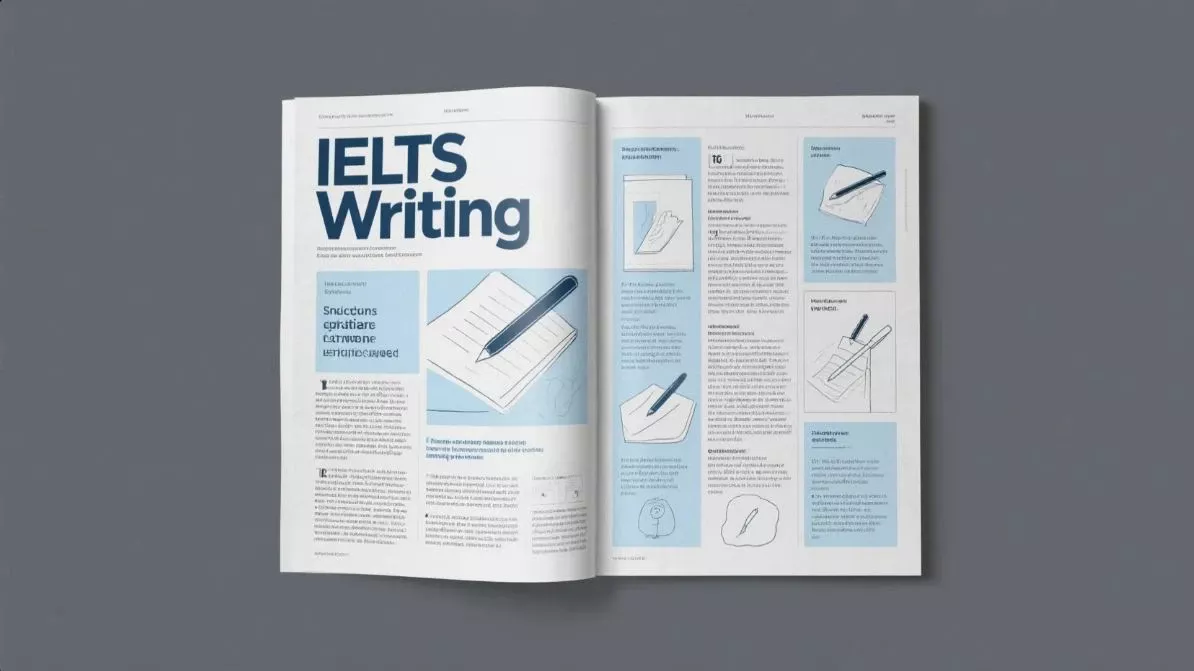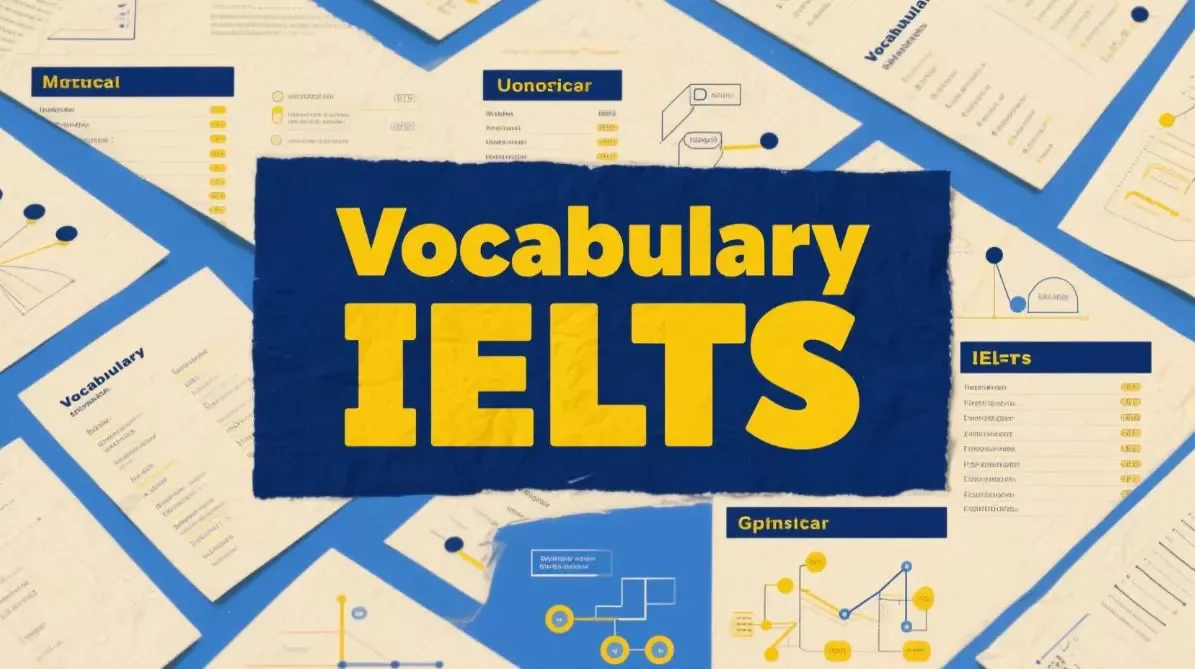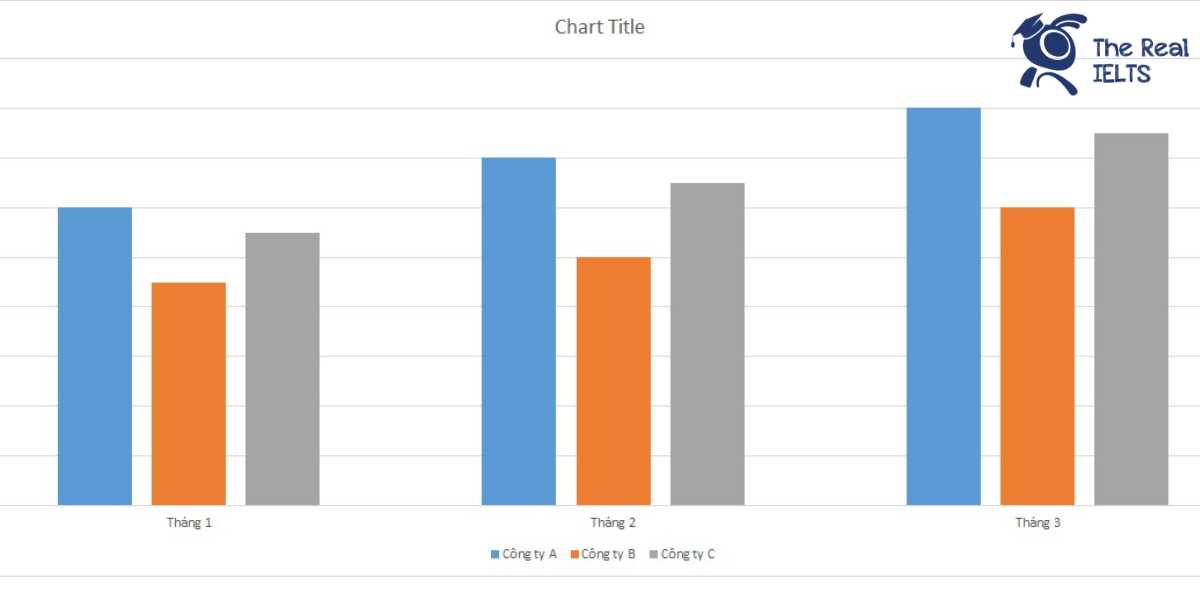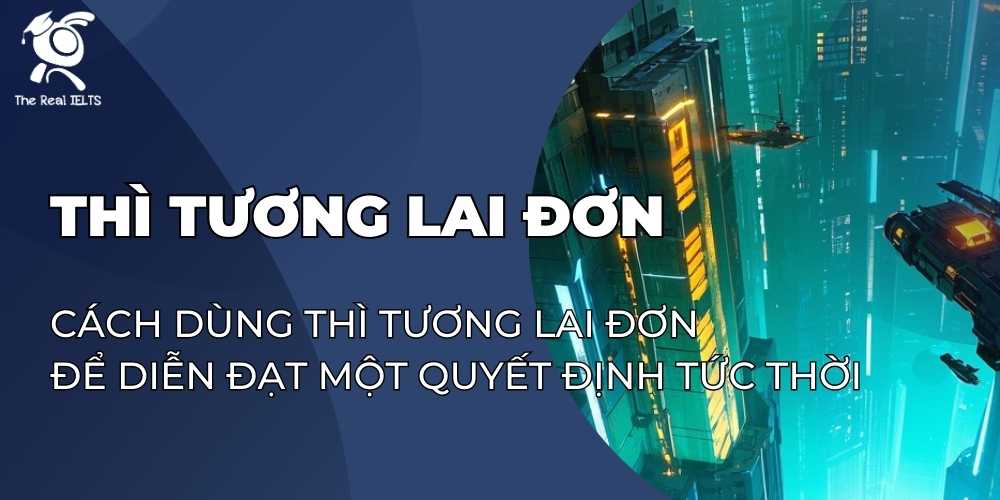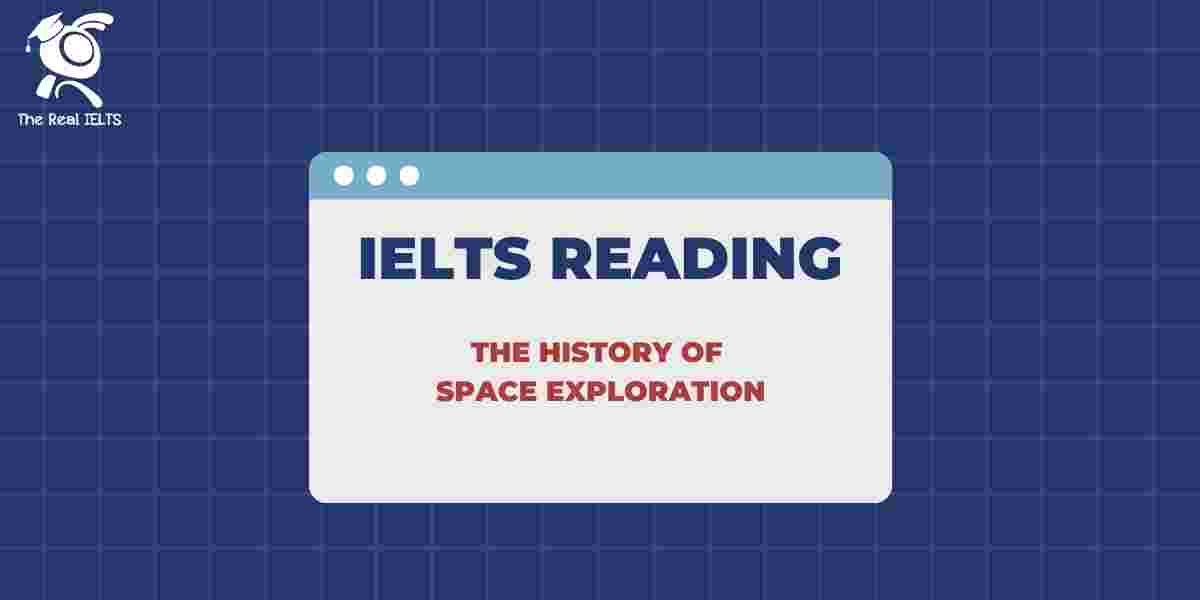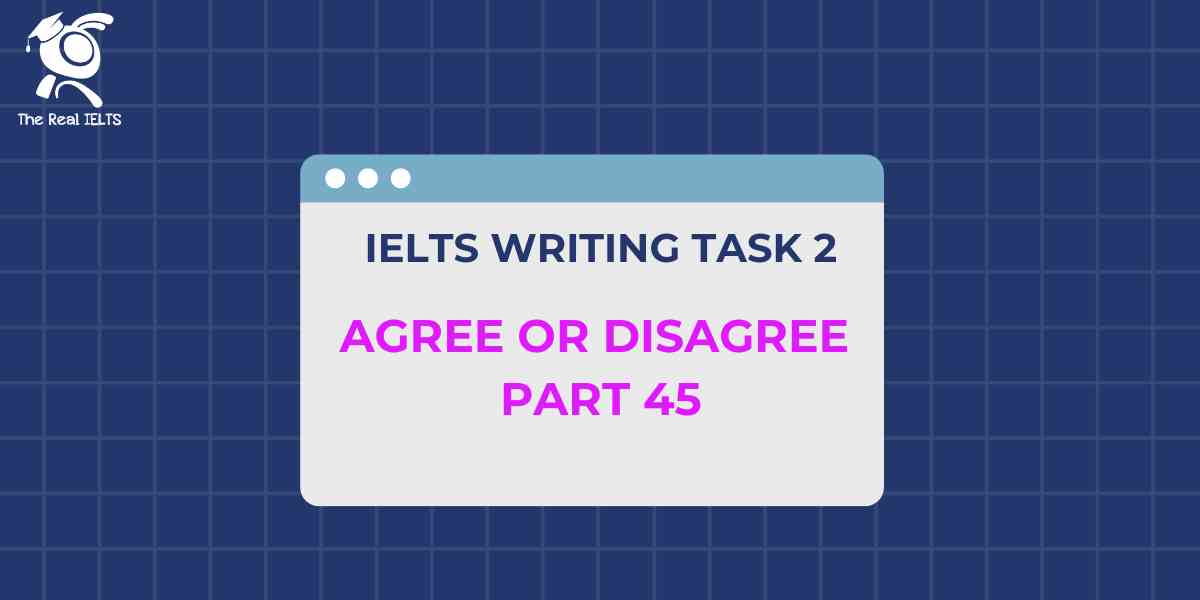Trong số bốn kỹ năng của kỳ thi IELTS, kỹ năng viết thường được xem là thách thức lớn nhất đối với thí sinh Việt Nam do yêu cầu cao về lập luận, ngữ pháp và từ vựng học thuật. Đặc biệt, IELTS Writing Task 2 Phần 47 đòi hỏi người học không chỉ hiểu sâu đề bài mà còn phải triển khai lập luận mạch lạc, có dẫn chứng và phản biện rõ ràng. Việc nắm vững cấu trúc bài viết và tư duy phản biện là yếu tố then chốt để đạt điểm cao.
Đọc thêm: IELTS Writing Task 2 Phần 46.
Đề 1 IELTS Writing Task 2
Some people believe that technology has made our lives more stressful, while others think it has made life easier and more convenient. Discuss both views and give your own opinion.
Bài essay (Band 6.5)
Technology has become an essential part of modern life, but its impact is debated. Some argue that it increases stress, while others believe it simplifies daily tasks. This essay will discuss both perspectives and provide my opinion.
On the one hand, critics of technology claim it creates stress. The constant use of smartphones and computers can lead to information overload, making people feel overwhelmed. For example, receiving endless work emails outside office hours can disturb personal life. Additionally, social media often causes pressure to keep up with trends, which can affect mental health. This suggests that technology, despite its benefits, can contribute to anxiety for many individuals.
On the other hand, supporters argue that technology makes life more convenient. Online shopping and banking save time, allowing people to manage daily tasks efficiently. For instance, apps like Uber or food delivery services provide quick solutions to everyday needs. Moreover, technology enables remote working, which offers flexibility and reduces commuting stress. These advantages show how technology can improve quality of life.
In my opinion, technology has both positive and negative effects. While it can cause stress if overused, it also offers practical solutions to many problems. The key is to use it wisely to balance convenience and well-being.
In conclusion, technology can be stressful when it overwhelms users, but it also brings significant convenience. I believe that with proper management, its benefits outweigh the drawbacks.
Chấm điểm (4 tiêu chí)
Task Response: 6.5
The essay addresses both views and gives a clear opinion. However, some points (e.g., social media pressure) are underdeveloped, and the opinion lacks depth to reach Band 7.
Coherence and Cohesion: 6.5
The essay is logically organized with clear paragraphs and linking words like “for example” and “moreover.” Transitions are sometimes repetitive, and ideas could be connected more smoothly.
Lexical Resource: 6.5
The vocabulary is appropriate, with some academic phrases (e.g., information overload, practical solutions). Word choice is occasionally basic or repetitive, limiting the score.
Grammatical Range and Accuracy: 6.5
The essay uses a variety of sentence structures with minor errors (e.g., article misuse, awkward phrasing). These do not hinder understanding but prevent a higher score.
Phân tích từ vựng
- Information overload
- Nghĩa tiếng Việt: Quá tải thông tin.
- Giải thích: Cụm từ này chỉ trạng thái tiếp nhận quá nhiều thông tin, thường liên quan đến công nghệ hoặc truyền thông. Nó phù hợp khi thảo luận về tác động tiêu cực của công nghệ. Ví dụ: “Constant notifications can lead to information overload.”
- Keep up with trends
- Nghĩa tiếng Việt: Bắt kịp xu hướng.
- Giải thích: Cụm này mô tả áp lực phải theo kịp các xu hướng xã hội hoặc công nghệ, thường dùng trong ngữ cảnh tiêu cực liên quan đến mạng xã hội. Ví dụ: “Young people feel pressured to keep up with fashion trends online.”
- Contribute to anxiety
- Nghĩa tiếng Việt: Góp phần gây lo âu.
- Giải thích: Cụm này chỉ việc một yếu tố làm tăng cảm giác lo lắng, phù hợp khi nói về tác động tâm lý. Nó mang tính học thuật và thường dùng trong bài nghị luận. Ví dụ: “Work pressure can contribute to anxiety among employees.”
- Manage daily tasks
- Nghĩa tiếng Việt: Quản lý công việc hàng ngày.
- Giải thích: Cụm này chỉ việc xử lý các nhiệm vụ thường nhật, thường dùng để mô tả lợi ích của công nghệ. Nó đơn giản nhưng phù hợp với văn học thuật. Ví dụ: “Smartphones help people manage daily tasks efficiently.”
- Remote working
- Nghĩa tiếng Việt: Làm việc từ xa.
- Giải thích: Cụm từ chỉ xu hướng làm việc qua mạng, phổ biến khi nói về lợi ích của công nghệ. Nó mang tính hiện đại và phù hợp với bài IELTS. Ví dụ: “Remote working has become common due to advanced technology.”
- Practical solutions
- Nghĩa tiếng Việt: Giải pháp thực tế.
- Giải thích: Cụm này chỉ các cách giải quyết hiệu quả và khả thi, thường dùng để nhấn mạnh lợi ích của một phương pháp. Ví dụ: “Technology provides practical solutions to transportation issues.”
Phân tích ngữ pháp
- Complex sentences (e.g., “While it can cause stress if overused, it also offers practical solutions to many problems.”)
- Giải thích tiếng Việt: Câu phức với mệnh đề nhượng bộ (while) được dùng đúng để so sánh hai ý đối lập. Đây là điểm mạnh ở Band 6.5, nhưng cần đa dạng hơn về cấu trúc (e.g., using “although” or “provided that”) để đạt Band 7.
- Article misuse (e.g., “social media often causes pressure” – đúng, nhưng dễ sai nếu viết “the social media”).
- Giải thích tiếng Việt: Mạo từ thường bị dùng sai ở Band 6.5. Trong bài, mạo từ khá chính xác, nhưng cần chú ý tránh thêm “the” trước danh từ không đếm được hoặc khái quát (e.g., “social media” thay vì “the social media”).
- Awkward phrasing (e.g., “disturb personal life” – đúng nhưng hơi vụng.)
- Giải thích tiếng Việt: Một số cụm từ chưa tự nhiên, làm giảm tính trôi chảy. “Disturb personal life” có thể thay bằng “disrupt work-life balance” để rõ ràng và học thuật hơn. Luyện viết tự nhiên sẽ giúp đạt Band 7.
- Modal verbs (e.g., “can lead to information overload.”)
- Giải thích tiếng Việt: Động từ khuyết thiếu (can, may) được dùng đúng để diễn đạt khả năng. Tuy nhiên, bài viết có thể tăng tính đa dạng bằng cách dùng “might” hoặc “could” để thể hiện mức độ không chắc chắn.
Tổng kết & gợi ý cải thiện
The essay achieves a solid Band 6.5, with a clear structure, relevant arguments, and appropriate language. However, it falls short of Band 7 due to underdeveloped ideas, basic transitions, and minor grammatical inaccuracies. To reach Band 7:
- Develop arguments: Provide specific examples (e.g., how a particular app saves time) or discuss counterarguments to show depth.
- Enhance cohesion: Use varied linking devices (e.g., “conversely,” “hence”) and ensure ideas flow seamlessly within paragraphs.
- Vary vocabulary: Replace repetitive words (e.g., “convenient”) with synonyms like “efficient” or “streamlined” and use more precise terms.
- Improve grammar: Eliminate minor errors (e.g., article misuse) and practice natural phrasing by studying model essays.
Đề 2 IELTS Writing Task 2
Many people believe that the best way to reduce crime is to give longer prison sentences. Others, however, think that there are better alternative methods to achieve this. Discuss both views and give your own opinion.
Bài essay (Band 6.5)
Crime is a serious issue in many societies, and there are different opinions on how to reduce it. Some people argue that longer prison sentences are the most effective solution, while others believe alternative methods work better. This essay will discuss both views and present my opinion.
On the one hand, supporters of longer prison sentences claim that they deter criminal behavior. When offenders face severe punishment, they may think twice before committing crimes. For example, a lengthy sentence for robbery could discourage potential thieves. Additionally, keeping criminals in prison longer can protect society by preventing them from causing further harm. However, this approach may not address the root causes of crime, such as poverty or lack of education.
On the other hand, those who favor alternative methods argue that they are more effective in reducing crime. Programs like rehabilitation and community service can help offenders reintegrate into society. For instance, providing job training to ex-prisoners can reduce their chances of reoffending. Moreover, educating young people about the consequences of crime can prevent criminal behavior before it starts. These methods focus on solving the underlying issues rather than just punishment.
In my opinion, while longer sentences may deter some crimes, alternative methods are more effective in the long term. A balanced strategy that combines punishment with rehabilitation is the best way to tackle crime effectively.
In conclusion, both approaches have merits, but I believe alternative methods, combined with some punishment, offer a better solution to reducing crime.
Chấm điểm (4 tiêu chí)
Task Response: 6.5
The essay addresses both views and provides a clear opinion. However, some ideas (e.g., rehabilitation benefits) are not fully developed, and the opinion could be more nuanced to reach Band 7.
Coherence and Cohesion: 6.5
The essay is well-organized with clear paragraphs and linking words like “for example” and “moreover.” Transitions are sometimes basic, and ideas within paragraphs could flow more smoothly.
Lexical Resource: 6.5
The vocabulary is appropriate, with some academic phrases (e.g., deter criminal behavior, root causes). Word choice is occasionally repetitive or simple, limiting the score.
Grammatical Range and Accuracy: 6.5
The essay uses a mix of simple and complex sentences with minor errors (e.g., article misuse, awkward phrasing). These do not impede communication but prevent a Band 7.
Phân tích từ vựng
- Deter criminal behavior
- Nghĩa tiếng Việt: Ngăn chặn hành vi phạm tội.
- Giải thích: Cụm từ này dùng để chỉ việc sử dụng biện pháp (như hình phạt) để ngăn ngừa tội phạm. Nó mang tính học thuật và thường xuất hiện trong các bài viết về luật pháp hoặc tội phạm. Ví dụ: “Harsh penalties can deter criminal behavior.”
- Protect society
- Nghĩa tiếng Việt: Bảo vệ xã hội.
- Giải thích: Cụm này mô tả hành động giữ an toàn cho cộng đồng, thường dùng khi nói về vai trò của hệ thống pháp luật. Nó phù hợp trong văn nghị luận về an ninh. Ví dụ: “Longer sentences help protect society from dangerous individuals.”
- Root causes
- Nghĩa tiếng Việt: Nguyên nhân gốc rễ.
- Giải thích: Cụm từ học thuật, dùng để chỉ các nguyên nhân cơ bản của một vấn đề. Nó thường xuất hiện khi thảo luận về cách giải quyết triệt để. Ví dụ: “Addressing the root causes of poverty can reduce crime rates.”
- Reintegrate into society
- Nghĩa tiếng Việt: Tái hòa nhập xã hội.
- Giải thích: Cụm này chỉ quá trình giúp người phạm tội trở lại cuộc sống bình thường, thường liên quan đến các chương trình cải tạo. Ví dụ: “Rehabilitation programs help offenders reintegrate into society.”
- Prevent criminal behavior
- Nghĩa tiếng Việt: Ngăn ngừa hành vi phạm tội.
- Giải thích: Tương tự “deter,” cụm này nhấn mạnh việc phòng ngừa tội phạm trước khi xảy ra, thường qua giáo dục hoặc cải cách. Ví dụ: “Early intervention can prevent criminal behavior in youths.”
- Balanced strategy
- Nghĩa tiếng Việt: Chiến lược cân bằng.
- Giải thích: Cụm này chỉ cách tiếp cận kết hợp nhiều phương pháp để giải quyết vấn đề. Nó phù hợp khi đưa ra ý kiến trung dung. Ví dụ: “A balanced strategy is needed to address environmental issues.”
- Tackle crime
- Nghĩa tiếng Việt: Giải quyết vấn đề tội phạm.
- Giải thích: “Tackle” là động từ mạnh, dùng để chỉ hành động mạnh mẽ đối phó với vấn đề. Cụm này phổ biến trong văn nghị luận về xã hội. Ví dụ: “Governments must tackle crime through education and law enforcement.”
Phân tích ngữ pháp
- Complex sentences (e.g., “When offenders face severe punishment, they may think twice before committing crimes.”)
- Giải thích tiếng Việt: Câu phức với mệnh đề phụ thuộc (when) được dùng đúng để giải thích điều kiện. Đây là điểm mạnh ở Band 6.5, nhưng cần đa dạng hơn với các loại mệnh đề khác (e.g., “although,” “unless”) để đạt Band 7.
- Article misuse (e.g., “a lengthy sentence for robbery” – đúng, nhưng dễ sai nếu viết “lengthy sentence for robbery.”)
- Giải thích tiếng Việt: Mạo từ (a/an/the) đôi khi bị dùng sai ở Band 6.5. Trong bài, mạo từ khá chính xác, nhưng cần chú ý danh từ số ít đếm được phải có mạo từ (e.g., “a sentence” thay vì “sentence”).
- Awkward phrasing (e.g., “keeping criminals in prison longer can protect society” – đúng nhưng hơi vụng.)
- Giải thích tiếng Việt: Một số câu chưa tự nhiên, làm giảm tính trôi chảy. “Keeping criminals in prison longer” có thể thay bằng “extending prison terms” để học thuật hơn. Luyện viết tự nhiên sẽ giúp đạt Band 7.
- Modal verbs (e.g., “they may think twice.”)
- Giải thích tiếng Việt: Động từ khuyết thiếu (may, can) được dùng đúng để diễn đạt khả năng. Tuy nhiên, bài viết có thể tăng tính đa dạng bằng cách dùng “might” hoặc “could” để thể hiện sắc thái khác.
Tổng kết & gợi ý cải thiện
The essay is a strong Band 6.5, with a clear structure, relevant arguments, and appropriate language. However, it misses Band 7 due to limited idea development, basic transitions, and minor grammatical errors. To reach Band 7:
- Expand arguments: Include specific examples (e.g., a successful rehabilitation program) or discuss counterarguments to show depth.
- Improve cohesion: Use varied linking devices (e.g., “in contrast,” “consequently”) and ensure smoother idea flow within paragraphs.
- Enhance vocabulary: Replace repetitive words (e.g., “effective”) with synonyms like “efficient” or “impactful” and use more precise terms.
- Refine grammar: Eliminate minor errors (e.g., article misuse) and practice natural phrasing through reading model essays.
Đề 3 IELTS Writing Task 3
Some people believe that governments should invest more in public transportation to solve traffic congestion problems. Others, however, think that building more roads is a better solution. Discuss both views and give your own opinion.
Bài essay (Band 6.5)
Traffic congestion is a growing problem in many cities, and there are different views on how to address it. Some argue that governments should prioritize public transportation, while others believe that constructing more roads is more effective. This essay will discuss both perspectives and present my opinion.
On the one hand, supporters of public transportation argue that it can reduce traffic congestion significantly. Efficient systems like buses and trains can carry many passengers at once, decreasing the number of private vehicles on the road. For example, a reliable subway system can encourage people to leave their cars at home, which helps alleviate urban congestion. Moreover, public transport is often more environmentally friendly, contributing to sustainable development. However, it requires substantial investment and may not suit rural areas.
On the other hand, those who favor building more roads believe it directly addresses traffic problems. Wider roads or new highways can accommodate more vehicles, reducing bottlenecks in busy areas. For instance, adding lanes to existing roads can improve traffic flow during peak hours. However, this solution may only provide temporary relief, as more roads could encourage car ownership, leading to further congestion in the long term.
In my opinion, investing in public transportation is the better option. It offers a long-term solution to traffic issues and supports environmental goals. While building roads may help in some cases, it does not address the root problem of over-reliance on cars.
In conclusion, both approaches have benefits, but I believe prioritizing public transportation is more effective for reducing traffic congestion sustainably.
Chấm điểm (4 tiêu chí)
Task Response: 6.5
The essay addresses both views and provides a clear opinion. Ideas are relevant but lack deeper exploration (e.g., specific examples of public transport success). More nuanced arguments could reach Band 7.
Coherence and Cohesion: 6.5
The essay is logically organized with clear paragraphs and linking words like “for example” and “however.” Transitions are sometimes repetitive, and ideas could be connected more seamlessly.
Lexical Resource: 6.5
The vocabulary is appropriate, with academic phrases (e.g., reduce traffic congestion, sustainable development). Word choice is occasionally basic or repetitive, limiting the score.
Grammatical Range and Accuracy: 6.5
The essay uses a mix of simple and complex sentences with minor errors (e.g., article misuse, awkward phrasing). These do not hinder communication but prevent a Band 7.
Phân tích từ vựng
- Reduce traffic congestion
- Nghĩa tiếng Việt: Giảm ùn tắc giao thông.
- Giải thích: Cụm từ này dùng để chỉ việc giảm tình trạng tắc nghẽn trên đường, thường xuất hiện trong các bài viết về giao thông hoặc đô thị hóa. Nó mang tính học thuật và phù hợp với ngữ cảnh. Ví dụ: “Better public transport can reduce traffic congestion in cities.”
- Alleviate urban congestion
- Nghĩa tiếng Việt: Giảm ùn tắc đô thị.
- Giải thích: Cụm này tương tự “reduce traffic congestion” nhưng nhấn mạnh bối cảnh đô thị. “Alleviate” mang sắc thái học thuật hơn “reduce.” Ví dụ: “New metro lines can alleviate urban congestion effectively.”
- Sustainable development
- Nghĩa tiếng Việt: Phát triển bền vững.
- Giải thích: Cụm từ học thuật, dùng để chỉ sự phát triển cân bằng giữa kinh tế, xã hội và môi trường. Nó phổ biến khi thảo luận về các giải pháp thân thiện với môi trường. Ví dụ: “Public transport promotes sustainable development.”
- Accommodate more vehicles
- Nghĩa tiếng Việt: Chứa đựng nhiều phương tiện hơn.
- Giải thích: Cụm này chỉ khả năng của cơ sở hạ tầng (như đường sá) đáp ứng lượng xe lớn hơn. Nó phù hợp khi nói về giải pháp giao thông. Ví dụ: “Wider roads can accommodate more vehicles during rush hours.”
- Encourage car ownership
- Nghĩa tiếng Việt: Khuyến khích sở hữu xe hơi.
- Giải thích: Cụm này mô tả tác động tiêu cực của việc xây thêm đường, làm tăng số lượng xe cá nhân. Nó thường dùng trong ngữ cảnh phê phán. Ví dụ: “New highways may encourage car ownership.”
- Long-term solution
- Nghĩa tiếng Việt: Giải pháp dài hạn.
- Giải thích: Cụm này chỉ một cách giải quyết có hiệu quả bền vững, thường dùng để nhấn mạnh tính ưu việt của một phương pháp. Ví dụ: “Renewable energy is a long-term solution to climate change.”
Phân tích ngữ pháp
- Complex sentences (e.g., “While building roads may help in some cases, it does not address the root problem of over-reliance on cars.”)
- Giải thích tiếng Việt: Câu phức với mệnh đề nhượng bộ (while) được dùng đúng để so sánh hai ý đối lập. Đây là điểm mạnh ở Band 6.5, nhưng cần đa dạng hơn với các mệnh đề khác (e.g., “provided that,” “unless”) để đạt Band 7.
- Article misuse (e.g., “a reliable subway system” – đúng, nhưng dễ sai nếu viết “reliable subway system.”)
- Giải thích tiếng Việt: Mạo từ (a/an/the) đôi khi bị dùng sai ở Band 6.5. Trong bài, mạo từ khá chính xác, nhưng cần chú ý danh từ số ít đếm được phải có mạo từ (e.g., “a system” thay vì “system”).
- Awkward phrasing (e.g., “contributing to sustainable development” – đúng nhưng hơi cứng.)
- Giải thích tiếng Việt: Một số cụm từ chưa tự nhiên, làm giảm tính trôi chảy. “Contributing to sustainable development” có thể thay bằng “promoting sustainable development” để mượt mà hơn. Luyện viết tự nhiên sẽ giúp đạt Band 7.
- Passive voice (e.g., “passengers can be carried by buses and trains.”)
- Giải thích tiếng Việt: Câu bị động được dùng đúng để nhấn mạnh hành động. Tuy nhiên, lạm dụng bị động có thể làm bài viết kém sinh động. Kết hợp với câu chủ động sẽ tăng tính đa dạng.
Tổng kết & gợi ý cải thiện
The essay achieves a solid Band 6.5, with a clear structure, relevant arguments, and appropriate language. However, it falls short of Band 7 due to underdeveloped ideas, repetitive transitions, and minor grammatical errors. To reach Band 7:
- Develop arguments: Provide specific examples (e.g., a city where public transport reduced congestion) or discuss counterarguments for depth.
- Enhance cohesion: Use varied linking devices (e.g., “on the contrary,” “as a result”) and ensure smoother idea flow within paragraphs.
- Vary vocabulary: Replace repetitive words (e.g., “effective”) with synonyms like “impactful” or “efficient” and use more precise terms.
- Refine grammar: Eliminate minor errors (e.g., article misuse) and practice natural phrasing by studying model essays.
Đề 4 IELTS Writing Task 4
Some people think that children should be taught to compete, while others believe that teaching them to cooperate is more important. Discuss both views and give your own opinion.
Bài essay (Band 6.5)
Education plays a vital role in shaping children’s character, and there is debate about whether competition or cooperation should be emphasized. Some argue that teaching children to compete is essential, while others believe cooperation is more valuable. This essay will discuss both views and present my opinion.
On the one hand, advocates of competition argue that it prepares children for the real world. In a competitive environment, children learn to strive for success, which can build confidence and ambition. For example, sports competitions encourage students to work hard to win, teaching them resilience and determination. These qualities are important in careers where individuals must stand out to succeed. However, excessive competition may lead to stress or selfishness.
On the other hand, supporters of cooperation believe it fosters better social skills. When children work together, they learn to share responsibilities and value teamwork. For instance, group projects at school teach students to communicate and solve problems collectively, which can enhance interpersonal skills. Cooperation also promotes kindness and empathy, qualities essential for a harmonious society. However, it may not prepare children for situations requiring individual effort.
In my opinion, both competition and cooperation are important, but cooperation should be prioritized. Teaching children to work together creates a supportive environment and prepares them for collaborative workplaces. While competition has benefits, it should be balanced to avoid negative effects.
In conclusion, both competition and cooperation have merits, but I believe emphasizing cooperation is more beneficial for children’s overall development and future success.
Chấm điểm (4 tiêu chí)
Task Response: 6.5
The essay addresses both views and provides a clear opinion. Ideas are relevant but lack deeper development (e.g., specific examples of cooperative skills in workplaces). More nuanced arguments could reach Band 7.
Coherence and Cohesion: 6.5
The essay is well-organized with clear paragraphs and linking words like “for example” and “however.” Transitions are sometimes basic, and ideas could be connected more fluidly.
Lexical Resource: 6.5
The vocabulary is appropriate, with academic phrases (e.g., strive for success, enhance interpersonal skills). Word choice is occasionally repetitive or simple, limiting the score.
Grammatical Range and Accuracy: 6.5
The essay uses a mix of simple and complex sentences with minor errors (e.g., article misuse, awkward phrasing). These do not impede communication but prevent a Band 7.
Phân tích từ vựng
- Strive for success
- Nghĩa tiếng Việt: Nỗ lực đạt thành công.
- Giải thích: Cụm này chỉ sự cố gắng để đạt được mục tiêu, thường dùng trong ngữ cảnh giáo dục hoặc nghề nghiệp. Nó mang tính học thuật và phù hợp khi nói về động lực cá nhân. Ví dụ: “Students must strive for success in their studies.”
- Resilience and determination
- Nghĩa tiếng Việt: Sự kiên cường và quyết tâm.
- Giải thích: Cụm này mô tả các phẩm chất giúp vượt qua khó khăn, thường dùng khi thảo luận về lợi ích của cạnh tranh. Nó phổ biến trong văn nghị luận. Ví dụ: “Challenges build resilience and determination in young people.”
- Stand out
- Nghĩa tiếng Việt: Nổi bật.
- Giải thích: Cụm này chỉ việc nổi trội so với người khác, thường dùng trong bối cảnh cạnh tranh. Nó phù hợp khi nói về thành công cá nhân. Ví dụ: “To get a good job, candidates need to stand out.”
- Share responsibilities
- Nghĩa tiếng Việt: Chia sẻ trách nhiệm.
- Giải thích: Cụm này mô tả hành động cùng nhau đảm nhận nhiệm vụ, thường dùng khi nói về lợi ích của hợp tác. Ví dụ: “Team members must share responsibilities to complete projects.”
- Enhance interpersonal skills
- Nghĩa tiếng Việt: Nâng cao kỹ năng giao tiếp.
- Giải thích: Cụm này chỉ việc cải thiện khả năng tương tác xã hội, phổ biến khi thảo luận về giáo dục hoặc làm việc nhóm. Ví dụ: “Group activities enhance interpersonal skills in students.”
- Supportive environment
- Nghĩa tiếng Việt: Môi trường hỗ trợ.
- Giải thích: Cụm này chỉ một không gian khuyến khích sự phát triển, thường dùng khi nói về lợi ích của hợp tác. Ví dụ: “A supportive environment helps employees thrive.”
Phân tích ngữ pháp
- Complex sentences (e.g., “When children work together, they learn to share responsibilities and value teamwork.”)
- Giải thích tiếng Việt: Câu phức với mệnh đề phụ thuộc (when) được dùng đúng để giải thích lợi ích. Đây là điểm mạnh ở Band 6.5, nhưng cần đa dạng hơn với các mệnh đề khác (e.g., “although,” “provided that”) để đạt Band 7.
- Article misuse (e.g., “a competitive environment” – đúng, nhưng dễ sai nếu viết “competitive environment.”)
- Giải thích tiếng Việt: Mạo từ (a/an/the) đôi khi bị dùng sai ở Band 6.5. Trong bài, mạo từ khá chính xác, nhưng cần chú ý danh từ số ít đếm được phải có mạo từ (e.g., “an environment” thay vì “environment”).
- Awkward phrasing (e.g., “qualities essential for a harmonious society” – đúng nhưng hơi cứng.)
- Giải thích tiếng Việt: Một số cụm từ chưa tự nhiên, làm giảm tính trôi chảy. “Essential for a harmonious society” có thể thay bằng “crucial for social harmony” để mượt mà hơn. Luyện viết tự nhiên sẽ giúp đạt Band 7.
- Modal verbs (e.g., “may lead to stress.”)
- Giải thích tiếng Việt: Động từ khuyết thiếu (may, can) được dùng đúng để diễn đạt khả năng. Tuy nhiên, bài viết có thể tăng tính đa dạng bằng cách dùng “might” hoặc “could” để thể hiện sắc thái khác.
Tổng kết & gợi ý cải thiện
The essay is a strong Band 6.5, with a clear structure, relevant arguments, and appropriate language. However, it misses Band 7 due to limited idea development, basic transitions, and minor grammatical errors. To reach Band 7:
- Develop arguments: Include specific examples (e.g., how teamwork skills benefit specific careers) or discuss counterarguments for depth.
- Enhance cohesion: Use varied linking devices (e.g., “in contrast,” “as a result”) and ensure smoother idea flow within paragraphs.
- Vary vocabulary: Replace repetitive words (e.g., “important”) with synonyms like “crucial” or “vital” and use more precise terms.
- Refine grammar: Eliminate minor errors (e.g., article misuse) and practice natural phrasing by studying model essays.


